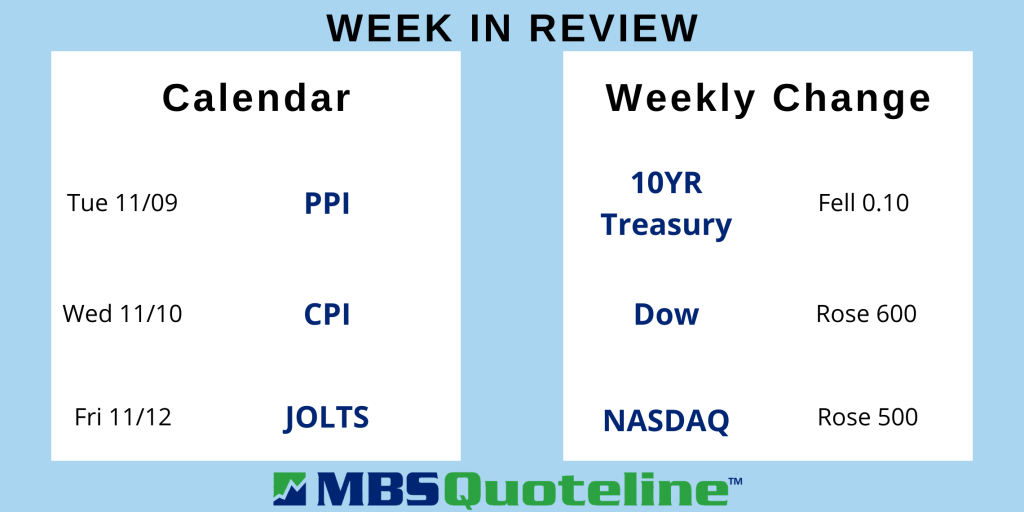This past week saw solid job gains amidst a packed week for mortgage markets. Highlighted by key labor market data and a Fed meeting, the U.S. economy did not see a shortage of economic news. When the dust settled, mortgage rates ended the week a little lower.
Solid Job Gains
Analysts closely watched Friday’s Employment report. Overall, Employment modestly exceeded expectations, showing solid job gains.
Against a consensus forecast of 450,000, the economy gained 531,000 jobs in October 2021. Revisions added 235,000 jobs to the results for prior months. Though the gains extended broadly across a wide range of industries, the leisure and hospitality sectors led the improvements.
Declining Unemployment Rate Accompanying Solid Job Gains
Alongside the solid job gains, the unemployment rate declined from 4.8% to 4.6% in September 2021. Thus, unemployment fell below the consensus forecast of 4.7%.
Investors view average hourly earnings as an indicator of wage growth. The most recent average hourly earnings data displayed an impressive 4.9% increase from a year prior. Additionally, average hourly earnings jumped up from 4.6% last month, hitting the highest level since February 2021.
Supply Chain Issues Plague Manufacturing
Aside from the solid job gains and declining unemployment rate, the Institute of Supply Management (ISM) highlighted several other reports. The ISM reports demonstrated the negative effects of supply chain disruptions on the manufacturing sector.
The national services sector index unexpectedly skyrocketed from 61.9 to a record high of 66.7. Meanwhile, the national manufacturing index remained roughly flat at 60.8. Levels above just 50 indicate that the sectors are expanding. Readings above 60 are rare.
While both reports hold strong by historical standards, supply chain issues greatly impact manufacturing companies. Many of these manufacturing companies need materials to produce goods.
Fed Tapering to Begin
All in all, the Fed did a commendable job of communicating its plans to investors in advance. Once again, there were no surprises and little lasting impact from the latest meeting.
According to the Fed meeting statement, the Fed plans to taper its $120 billion per month of bond purchases by $15 billion per month beginning later this month. This revelation fell right in line with expectations.
Officials anticipate that inflation will ease from current elevated levels as supply chain resolve, and solid job gains persist. However, the Fed offered little new guidance in determining the exact timing of the first federal funds rate hike. Lastly, investors anticipate the rate hike to take place near the middle of next year.
Looking Ahead After Solid Job Gains
Looking ahead after the solid job gains, investors seek hints from Fed officials about the timing for future rate hikes. Additionally, investors closely watch COVID-19 case counts around the world, particularly in Europe.
Beyond that, the Consumer Price Index (CPI) releases on Wednesday. Analysts widely follow CPI as a monthly inflation indicator. CPI looks at the price changes for a broad range of goods and services.
Mortgage markets close on Thursday in observance of Veterans Day. Finally, the JOLTS report, which measures job openings and labor turnover rates, comes out on Friday.
Want to see how solid job gains drive mortgage-backed securities lower? Never miss an update with MBSQuoteline. To receive by-the-minute updates on mortgage-backed securities, try our platform free for 14 days.
Stay connected with MBSQuoteline on social media by following us on Facebook, Twitter, and LinkedIn.
All material Copyright © Ress No. 1, LTD (DBA MBSQuoteline) and may not be reproduced without permission. To learn more about the MortgageTime™ newsletter, please contact MBSQuoteline at 800.627.1077 or info@mbsquoteline.com.



